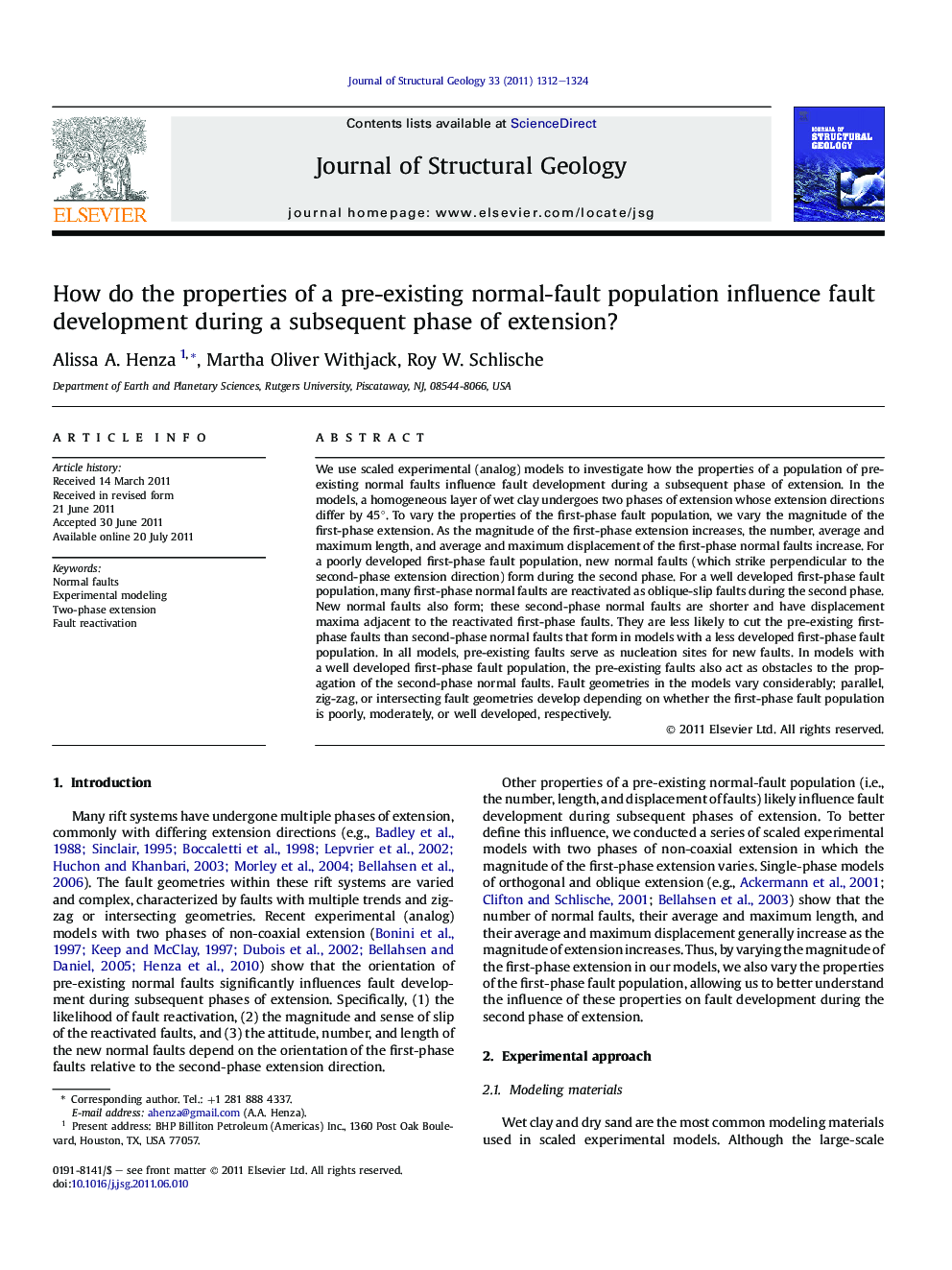| Article ID | Journal | Published Year | Pages | File Type |
|---|---|---|---|---|
| 4733463 | Journal of Structural Geology | 2011 | 13 Pages |
We use scaled experimental (analog) models to investigate how the properties of a population of pre-existing normal faults influence fault development during a subsequent phase of extension. In the models, a homogeneous layer of wet clay undergoes two phases of extension whose extension directions differ by 45°. To vary the properties of the first-phase fault population, we vary the magnitude of the first-phase extension. As the magnitude of the first-phase extension increases, the number, average and maximum length, and average and maximum displacement of the first-phase normal faults increase. For a poorly developed first-phase fault population, new normal faults (which strike perpendicular to the second-phase extension direction) form during the second phase. For a well developed first-phase fault population, many first-phase normal faults are reactivated as oblique-slip faults during the second phase. New normal faults also form; these second-phase normal faults are shorter and have displacement maxima adjacent to the reactivated first-phase faults. They are less likely to cut the pre-existing first-phase faults than second-phase normal faults that form in models with a less developed first-phase fault population. In all models, pre-existing faults serve as nucleation sites for new faults. In models with a well developed first-phase fault population, the pre-existing faults also act as obstacles to the propagation of the second-phase normal faults. Fault geometries in the models vary considerably; parallel, zig-zag, or intersecting fault geometries develop depending on whether the first-phase fault population is poorly, moderately, or well developed, respectively.
► We use analog clay models to study two phases of non-coaxial extension. ► Angle between extension directions is 45°; magnitude of phase-1 extension varies. ► Preexisting faults are reactivated and serve as nucleation sites for new faults. ► Well-developed phase-1 faults are obstacles to propagation of new faults. ► Parallel to zig-zag to intersecting fault patterns form as phase-1 strain increases.
